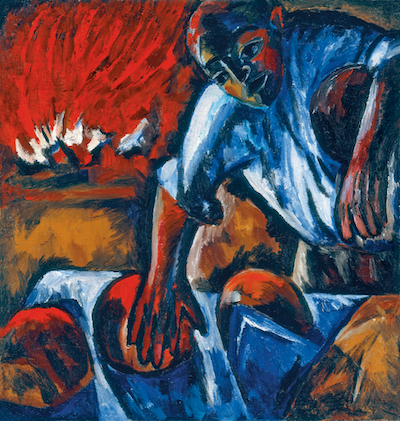Colour temperature is often misunderstood but undeniably crucial. It’s not just about identifying whether a colour is cool or warm; it’s about understanding the intricate dance between colours and how they can bring your artwork to life. We are going to delve into the world of colour temperature, exploring its meaning, significance, and how it can elevate your artistry.
What Does Colour Temperature Really Mean?
At its core, colour temperature relates to the warmth or coolness perceived in a colour. It’s all about how we interpret colour – does it lean towards warmth or coolness? Think of it as a spectrum, where warm colours like yellow, orange, and red reside on one end, and cool colours like greens, blues, and violets occupy the other. But remember, this is a broad classification.
The beauty of colour temperature lies in its fluidity. Warm colours aren’t eternally warm, and cool colours aren’t always cool. It’s about the relationships between colours, how they influence each other’s perceived temperature. A colour might seem warm on its own but appear cooler when paired with something else. Or when a warm colour is placed near a cool colour, it can appear even warmer (and the cool colour cooler) due to the influence of its neighbouring colour.
These interactions are the fundamental concept behind colour temperature.

Why Understanding Colour Temperature Matters
Let’s dive into why grasping colour temperature is essential for artists.
- Precise Colour Representation: Imagine painting a red apple to look as real as the one on your table. Understanding colour temperature is your key to achieving this level of realism. It helps recreate colours so vivid that they seem almost tangible.
- Enhancing Spatial Relationships: Warm colours tend to pop forward, while cool colours recede into the background. This principle is a game-changer in landscape art, where it can create a sense of depth and distance. This is what we refer to as aerial or atmospheric perspective. You can also experiment and attempt to confound the receding/advancing nature of warm and cool colours!
- Psychological Impact: Colours have the power to evoke emotions. Warm colours excite, while cool colours soothe. Knowing how to use this psychological dimension can be a powerful tool in conveying mood and atmosphere in your art.
- Creating Colour Dominance: Embracing colour temperature goes beyond establishing colour dominance; it infuses a sense of warmth or coolness into your artwork.
- Pastel Artistry: For pastel artists, understanding colour temperature is like wielding a magic wand. It allows you to layer colours strategically, creating a mesmerizing colour vibration with temperature (warm on cool or cool over warm) that adds depth and richness to your work.


How to See Colour Temperature
Determining colour temperature is about assessing whether a colour tends towards cool or warm. However, it’s not always straightforward, especially when dealing with some colours. Take for example some blues that have either hints of green or violet in them. Here’s the catch – green contains warmth (yellow) as well as cool (blue), and violet has its touch of warmth (red) along with the coolness of blue. So, it all depends on the context and the colours surrounding the one in question. Some will argue that blue warms up as it shifts towards green, while others claim the opposite. The truth lies in the eyes of the beholder and the context of your artwork.
Another consideration that will help you determine colour temperature is understanding the colour of the light source. During the late afternoon, the sun bathes the world in a warm, golden glow, while under an overcast sky, a cooler, more subdued light prevails. Light reveals colour and the temperature of the light affects and alters the colour of everything.
The key takeaway is that colour temperature is all about observation, perception, and the relationships between colours.

And Finally…
Colour temperature is not about rigid rules but about observing and understanding. So I want you to always be thinking this question: is this colour cooler or warmer than the one that’s beside it?
To recap, colour temperature:
- Acts as a powerful tool for precise colour representation
- Influences spatial relationships, creating depth and dimension
- Evokes emotions and moods in your artwork
- Ensures a colour dominance
- Enhances the magic of pastel art through strategic layering
Remember, colour temperature is your ally, your secret weapon in the world of art. Embrace it, experiment with it, and let it breathe life into your creations.
How comfortable are you with the notion of colour temperature? Let me know in the comments!
Until next time,
~ Gail
PS. Want to go deeper into Colour Temperature? Then grab my Masterclass that’s available FREE until 26th September. Click HERE for all the details!!
PPS. The images I’ve used to illustrate this post come from the Museo Nacionale Thyssen-Bornemisza , Madrid, Spain. Why you may ask especially as they aren’t pastel paintings. Here’s the answer. I created a tutorial on this subject for my IGNITE! membership and for our Looking at Art session (where we look at art that embody the theme of the month) I collected examples from this museum. So it made sense to raid that vault!
























![Pastels on black aper: Gail Sibley, "Untitled [at this point], Mount Vision pastels on Sansfix pastel card, 5 1/2 x 7 3/4 in](https://www.howtopastel.com/wp-content/uploads/2016/04/IMG_9649-2-150x150.jpeg)







4 thoughts on “Understanding Colour Temperature”
Thank you – this blog post really complements the mini-masterclass. I also appreciate the links to older blog posts that can be so informative, such as the colour studies!
Thanks Eileen! I did hope that it would go hand-in-hand.
And I’m delighted that you’ve discovered older posts. This was definitely a big part of the website reno!
Thank you so much Gail. It certainly revised my thinking on the different hues of a pigment. I just watched the zoom video, as a tad early for me. Victoria, Australia.
You are so welcome Nola! I love hearing you are rethinking different hues. So much of colour temperature is relational!